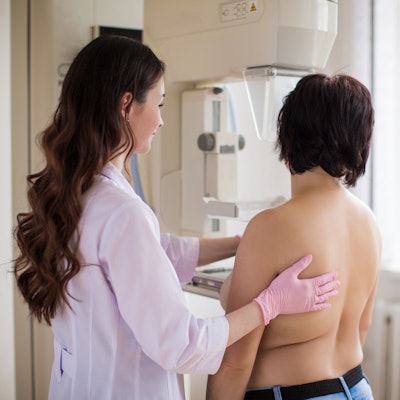
Dense breast notification laws appear to be providing more women with density information, but the gains are not equal across all types of women, according to the findings of a study published on December 24 in the Journal of the American College of Radiology.
Researchers at Boston University School of Medicine (BUSM) conducted a telephone survey with 2,306 women over the age of 40 who underwent mammography within the past two years and heard the term "breast density."
A total of 57% of the sample cohort recalled receiving personal breast density information after their mammogram, and 39% of women said they discussed breast density with their providers.
Women living in states with notification laws were 1.5 times more likely to say they received density information and 1.75 times more likely to say they discussed density with their providers than those living in states without notification laws.
However, the results were not uniform. Older Black and Asian women in lower income brackets and with lower health literacy rates were less likely to receive density information. Furthermore, older and Asian women were less likely to have spoken with their providers.
In contrast, women with a high health literacy rate as well as those with a previous biopsy were more likely to have spoken with their providers. The study did not include women diagnosed with breast cancer.
"These findings suggest that 'one size does not fit all' when breast density information is conveyed and suggests that the message or the mode of dissemination may need to be tailored for different populations to achieve knowledge equity," stated corresponding author Nancy Kressin, PhD, a researcher and professor of medicine at BUSM.



















